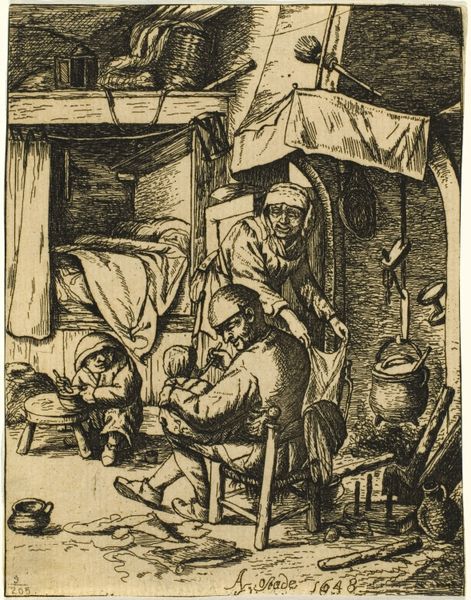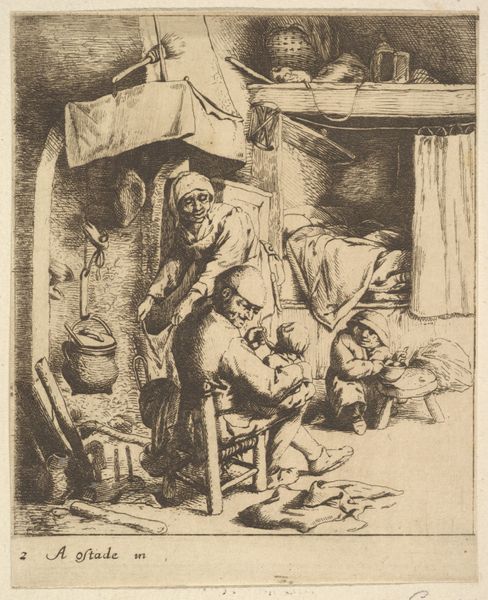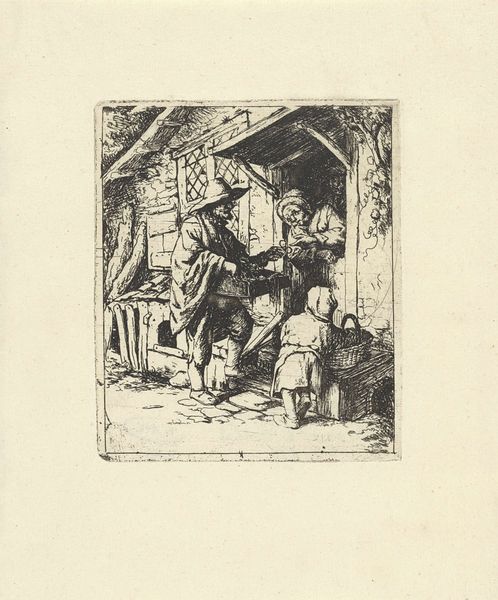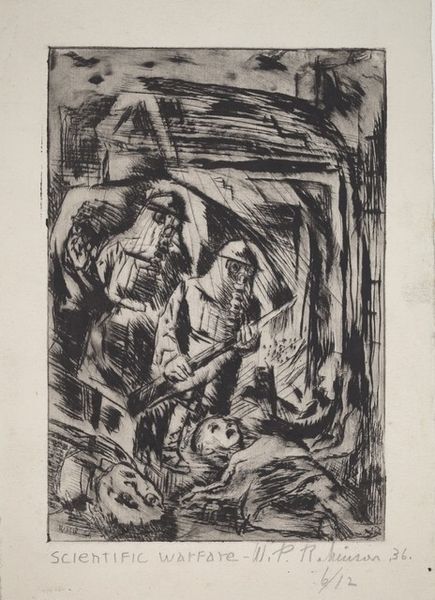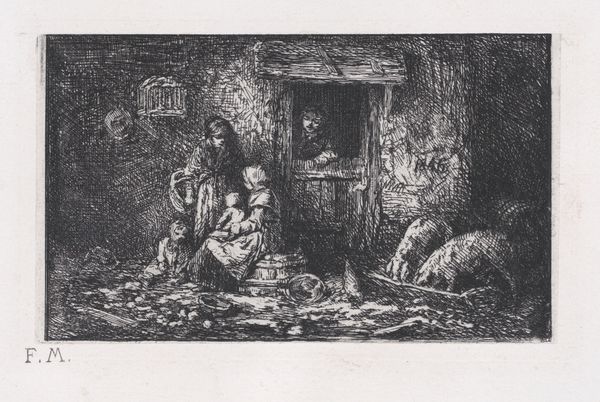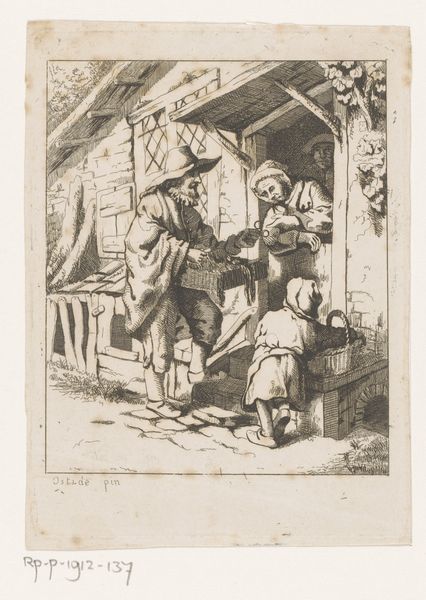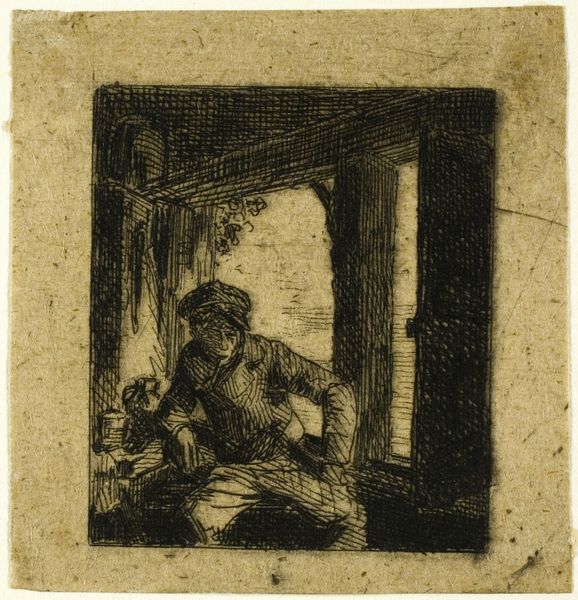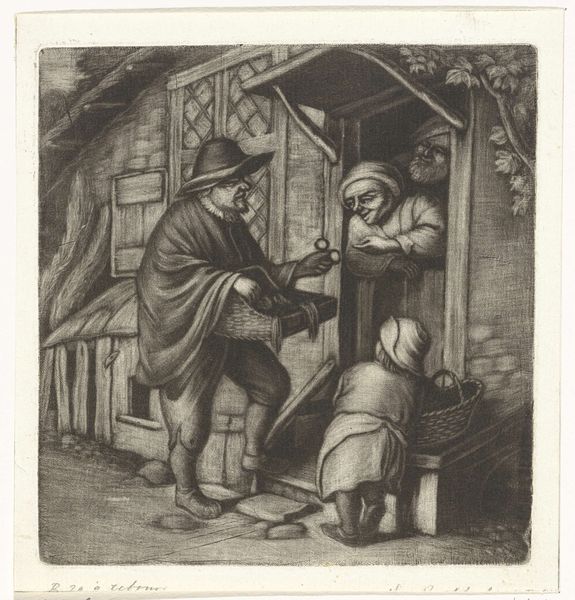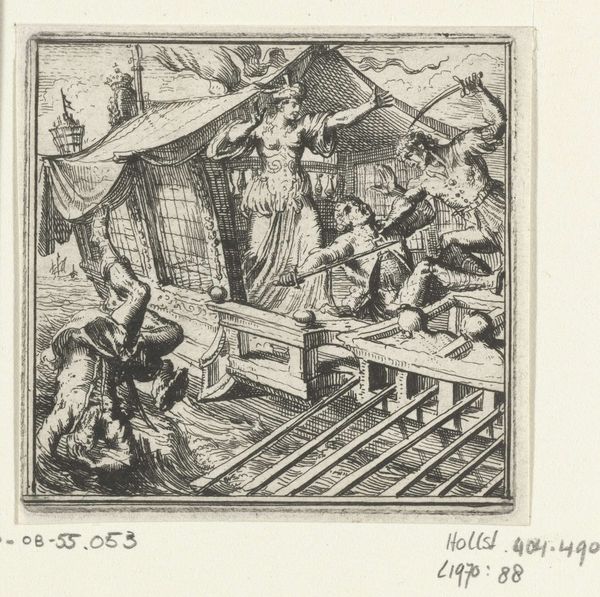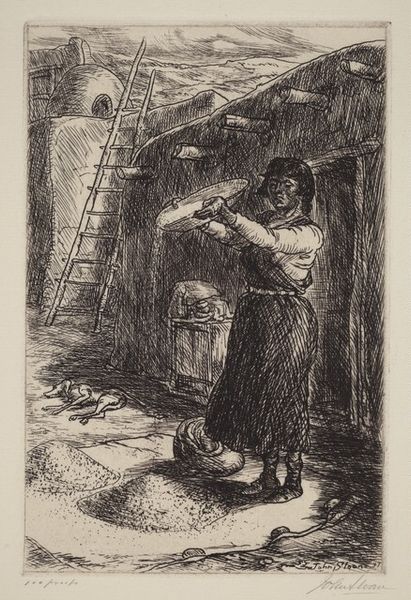
Dimensions: 122 × 117 mm (image/plate); 217 × 141 mm (sheet)
Copyright: Public Domain
Curator: Standing before us is "The Poulterer" created in 1908 by Auguste-Louis Lepère. It's a print rendered with etching on paper, currently residing here at The Art Institute of Chicago. Editor: My initial reaction? There is a very eerie feeling that it projects, partially attributed to the dark tonalities but enhanced also by the chaotic composition, and of course the rather disturbing imagery, dead birds lying everywere.. Curator: Well, the imagery, although maybe stark for us now, reflects the rhythms of rural life at the turn of the century, don't you think? Look at how Lepère used the etching technique, with fine lines, to bring forth a strong symbolic dimension. Editor: Perhaps. I see a rather unromanticized version of peasantry and labor, removed from idyllic imagery. Notice how Lepère emphasizes the back of the poulterer figure; we are forced to confront his physical exertion and his almost brutish, stooped form. Curator: And, in relation, observe the children—the little girl's curious observation mirrors that of an initiate in ancient ritual art. These repeated gestures are there to establish the relationship of the painting within cultural memory. What feelings and information does it project? Editor: It is about inherited roles, no doubt, or how labor is transferred and instilled. The girl, with her hands on her hips, she's mimicking a power dynamic of the domestic arena—I mean, who holds the knowledge, here? And for whom is that knowledge being reproduced? Is the Poulterer a symbol of something more insidious that Lepere is attempting to convey, or perhaps not convey? Curator: Your perspective is so heavily politicized! Maybe he's representing these genre painting figures—you know, the "laborer"— to ennoble the image of these working-class people? I think it shows something very authentic in how symbolism and realism intertwine here. Editor: I understand the impulse to find value in it as authentic expression, but the "authentic" expression always benefits some at the expense of others! These are real social relations manifested symbolically. To view it passively runs the risk of maintaining those social relations! Curator: Maybe that is fair, in regards to its lasting impacts; perhaps seeing that the painting also represents more universal symbols beyond his original intention is, at the very least, fair. Editor: Agreed. These lasting images act like visual echoes, shaping cultural narratives in ways the artist could never fully anticipate.
Comments
No comments
Be the first to comment and join the conversation on the ultimate creative platform.
